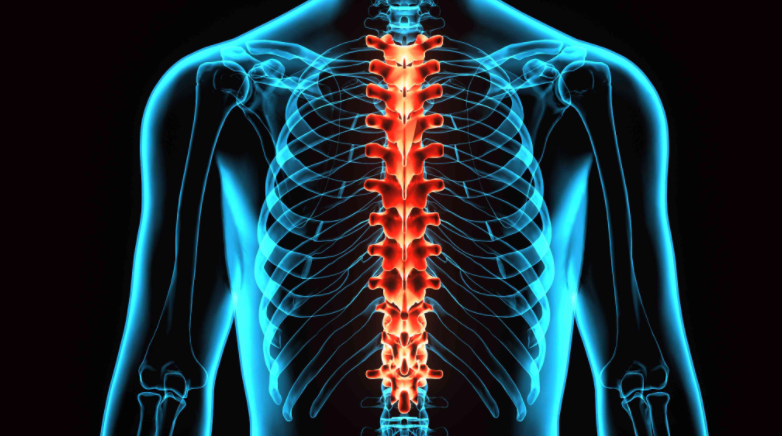Your Back is Causing Your Neck pain
Sep 16, 2021
Our past couple blogs have revolved around neck pain. Why? Because it’s 2021 and we are a year and a half into our “new normal” caused by the global pandemic, which means more time working from home, which means increased time spent behind a computer screen, which means more neck pain and more headaches. Throw on the added stress that people are experiencing and it’s starting to feel like there’s a different kind of pandemic going around with all the neck pain and headaches we’ve been treating at Athletes’ Potential.
In our previous blogs this month, we’ve given a ton of great information about how your neck is the source of your headaches and why looking down at your phone all day may not be the best idea. (If you missed those, you can find them here.) While all that may be great, there’s one area that frequently gets missed when people get their necks looked at by a medical professional, and that area is their back.
While there are certainly fasial lines, misaligned joints, and muscle tensions in the low back that can cause changes “up the chain” that lead to neck pain, those situations are a little fewer and farther between and aren't necessarily the part of your back that I’m talking about. Instead, we’re talking specifically about your thoracic spine, or your upper back.

A little anatomy lesson for you to make sure we are all on the same page. Your spine is divided into three separate segments: cervical (neck), thoracic (mid back), and lumbar (low back)... in other words, your thoracic spine connects your neck to your low back. Now, there are a couple of things that are pretty cool when we’re talking about your thoracic spine:
- The top half of your thoracic spine acts and moves like your neck, while the bottom half of your thoracic spine acts and moves more like your low back
- The thoracic spine is where your ribs attach and, thanks to these attachments, is incredibly sturdy. Think of how many of your friends and family members complain of back pain... now how many of them are referencing their low back? Chances are most of them are and that’s because of this added stability.
Going back to that first fun fact: The upper portion of your thoracic spine has to be able to move along with your neck. Hypomobility leads to pain. In other words, if one joint isn’t moving properly, then that causes other joints (above or below the stiff joint) to have to move in an excessive range of motion (hypermobility), which leads to pain in those joints. That is exactly what we see when it comes to the upper thoracic spine and its ability to cause neck pain. If your upper back has excessive stiffness, then that causes your neck to have to rotate, extend, etc., in excessive ranges of motions to do simple tasks (think looking over your shoulder to check a blind spot), which will inevitably lead to pain.
Luckily, there a ton of drills you can do to help improve your thoracic spine mobility and two of my all time favorites are listed below:
Thoracic Spine Self Release:
The second way your thoracic spine can cause neck pain actually has more to do with that second fun fact. One of the most important functions of your rib cage is to protect some very important structures such as your heart, lungs, liver, diaphragm, etc. Your lungs and diaphragm in particular are what we want to focus on here. You see, when people sit at a desk for prolonged periods of time or are experiencing high amounts of stress, what tends to happen is people start taking shorter breaths and use the accessory muscles found in the neck when they breath instead of the more appropriate muscle being their diaphragm. When this happens, we’ll start seeing muscles like the scalenes, sternocleidomastoid (SCM), and subclavius start to develop too much tension, which will lead to neck pain and even referred pain causing headaches.
Lucky for you, we have some favorite drills that can help with that too, and a lot of them focus on proper breathing. Now, before you roll your eyes and think, “proper breathing?! Breathing is breathing,” that’s what I used to think too, but thanks to our good friends over at Shift, in addition to the thousands of people we’ve helped to improve their breathing, I can promise you, that thought process couldn’t be further from the truth. Give these drills a shot and see for yourself. You’ll be amazed at how effective cleaning up your breathing patterns can be.
90/90 Diaphragmatic Breathing:
Breathing Pattern Fundamentals (90/90 Technique)
Gut Smash for the Diaphragm Part 2
In review, improving your upper thoracic mobility and appropriate breathing patterns could be effective treatment options for you if you’re dealing with neck pain and, at a minimum, will help you live a healthier life. However, these treatment options are just pieces of the ever elusive puzzle that make up neck pain. If you’re dealing with neck pain, reach out with any questions. We design and implement programs to help people just like you, whether you’re someone who doesn’t know where to start or has had an unsuccessful rehab experience. It is our goal at Athletes’ Potential for the people we work with to get out of pain and return to their sport or activity, performing better than they did before.
Thanks for reading,
Dr. Jake, PT, DPT, CSCS
Let us help you figure out to live your best active life today!
Remember, Movement is Medicine!

